No trip to Barcelona would be complete without paying tribute to the city’s most celebrated building – La Sagrada Familia. Everyone’s seen pictures of its crazy towers and the stylish silhouette it cuts against the city’s skyline.
But is La Sagrada Familia inside worth a visit? Surely there’s no way it can be as extravagant on the inside as it is on the out?
Think again…
If you want to visit the Sagrada Familia with a tour, don’t worry. You can book a tour that includes fast-track entrance so you don’t need to wait in line and get the complete experience.
There are regular tours with skip-the-line entrance, private tours with skip-the-line entrance, and tours with fast-track entry that include a visit of the Sagradra Familia towers.
Contents
I visited La Sagrada Familia a few years ago. This post was updated to reflect current practical information. I also replaced my own photos of the Sagrada Familia church inside with some stock photos as the camera I was using at the time of my trip wasn’t exactly excellent :-)
Is La Sagrada Familia Inside worth it?
About La Sagrada Familia
It’s been nearly 140 years in the making, and it’s still only 70 percent complete. La Sagrada Familia is one of the world’s longest-lasting architectural projects, begun all the way back in 1882!
Construction was initially begun by an architect called Francisco de Paula del Villar, who had a fairly standard Gothic Revival design in mind for the project. However, he didn’t work on the plans for long. The legendary Antoni Gaudi took over the building just one year later in 1883.
It was Gaudi who would go on to radically change the designs, stamping his unmistakable mark on a building that would become one of the most distinctive and groundbreaking in the history of modern architecture.
The forecasted Sagrada Familia finish date has been postponed time and time again over the course of its construction. Gaudi famously said back in 1922 when asked when it would be completed, “my client isn’t in a hurry”. He considered his client to be God, as he was a deeply Catholic man.
So, how come it’s taken so long to finish?
A mixture of reasons. The Spanish Civil War had a big impact on progress. In 1939 the crypt was set on fire by revolutionaries, who also broke into the workshop and destroyed Gaudi’s original plans, models and drawings. This set the process back by 16 years, as the master model was gradually pieced back together.
In the 50s, construction was back on track. Since then things have sped up due to breakthroughs in technology and of course, more funding due to ticketed entry fees. The halfway mark was declared in 2010, which is the same year that the church was officially consecrated by Pope Benedict XVI, who then proclaimed it a basilica.
However, there is still a long way to go before Gaudi’s vision for the completed building is realized and ten more spires remain to be built. Hopes are that it will finally be completed in 2026, on the centenary of Gaudi’s death.
Despite being unfinished, this extraordinary global landmark is truly a sight to behold. Every element of the Sagrada cathedral is deeply symbolic and a proper analysis of the curves, shapes, and designs could go on forever!
There are three different facades – the Nativity side facing east, the Glory facade facing south, and the Passion facade to the west. Walking around La Sagrada Familia church, it can feel like looking at three completely different buildings.
About Gaudi
Antoni Gaudi himself is probably the most famous person in Barcelona’s recent history. Today, his legacy is still considered cutting-edge and revolutionary, and his designs have become attractions that pull millions of tourists each year.
Gaudi was a Catalan architect who was a pioneer of Modernisme or Catalan Modernism (Barcelona’s version of Art Nouveau). His style was totally unique, and he constantly pushed against the boundaries of the traditional.
Amazingly though, he managed to do this whilst using and adapting ideas from the past. His iconic works often drew from Baroque, Neoclassical and Gothic architecture, all the while defying convention and surprising the world.
He was born in 1852, and from a young age spent a lot of time immersed in nature. There’s no doubt that this had an effect on his work later in life, as he developed a free-flowing organic style very much inspired by the natural world.
He observed that the harsh geometric lines, triangles, squares and perfect circles that were everywhere in previous architecture were rarely found in nature. So Gaudi determined to create a new type of architecture, based on the curved lines of nature instead. This curvilinear technique is a staple feature of Gaudi’s designs.
Another key influence for Gaudi was religion. He was an incredibly pious man and pretty much everything he designed held some sort of religious symbolism or weight. He saw his buildings as a means to communicate the Christian message.
For him, la Sagrada Familia was his great work, his magnum opus, and he devoted the majority of his life to its design and construction. After his tragic death in 1926 (aged 73) when he was struck by a tram as he made his way through his beloved city, his body was buried in the crypt of la Sagrada Familia itself. At this point, the basilica was only a quarter finished!
It’s not just the famous basilica of la Sagrada Familia that Gaudi left behind, however. His mark is everywhere in the city, from the Park Güell to the iconic buildings La Pedrera and Casa Batllo.
Park Güell
Gaudi’s Park Güell is a great example of the architect’s profound interest in the natural world and how he reflected its shapes and forms in artificial structures. Playful, colorful and imaginative, it’s one of the most impressive parks in the world.
At the entrance lies the easily recognizable image of the mosaic lizard, and great views of the city. Commissioned by Count Eusebi Güell, the park was opened to the public in 1926 and is now UNESCO World Heritage-listed. Today, most of the park is free and open to the public, but the central area is ticketed and gets quite busy so it must be booked in advance.
La Pedrera/ Casa Mila
Also known as Casa Mila, La Pedrera is a creative marvel. It was designed as a private residence between 1906 and 1912 and is another typical Modernist building. Standing in front of it, you’ll be immediately struck by its curves – like something out of a fairytale or fantasy world! An undulating facade and twisted iron balconies make this one of the most iconic buildings in Barcelona.
Casa Batllo
Make sure you check out another of Gaudi’s masterpieces – Casa Batllo. This is one of his most famous works, but it wasn’t built from scratch by him, merely renovated. The building is also called the House of Bones because of its quirky warped front and strange skeletal design.
Is it worth visiting La Sagrada Familia inside?
In one word, yes. Once we got in we forgot all about that know-it-all who’d been standing in front of us in the line, bragging about how many countries he’d visited. We were inside La Sagrada Familia interior and marveling.
This place is so unlike any other church I’ve ever seen that I wanted to take in every little detail. What surprised me was that I didn’t have a hard time doing so. There’d been such a line outside that I’d expected La Sagrada Familia inside to be packed, but there was ample space to move around.
There are a million reasons why La Sagrada Familia interior is well worth the effort. Every corner and every surface has been carefully designed and engineered – not just to be efficient and beautiful, but to signify or symbolize something.
He really threw away the rulebook when it came to designing the inside of the basilica. Most people find traditional churches dark, somber places for serious contemplation and worship. The inside of Sagrada Familia, however, couldn’t be further from that. Gaudi was a huge fan of natural light, and often took the behavior of light into account in his planning.
The basilica is an extremely bright place, painted with pale, reflective colors and punctuated with stunning stained glass windows. The west side of the structure has yellow, orange and red colors and stained glass. The east has contrasting blues and greens. The light that seeps through is tinted and totally magical.
The result is simply breathtaking. Stepping into the Barcelona Sagrada Familia interior is like walking into a scene from Alice in Wonderland!
Huge columns of basalt and red porphyry made in the shape of tree trunks transport you to a magical forest, branching out into palm tree-like structures that pull the eye up to the vast, vaulted ceiling. Ethereal rays of sunlight spill in through the colored glass like dappled light through trees.
Lamps positioned on these columns have different illustrated symbols for the different Evangelists – a winged ox for Luke, a winged man for Matthew for example – and cast beautiful reflections around the church. Each of the numerous columns in the building represents something, from the twelve apostles to the five continents.
Looking up is quite dizzying – suddenly, your world is turned upside down and you feel like you’re staring down a huge kaleidoscope! The central vault is 200 feet high (60 meters). It’s easy to take impressive La Sagrada Familia pictures here as most of the subject matter is high up above the heads of the other visitors, so there’s no worry of getting a tourist-cluttered snap.
At the furthest end of the Sagrada Familia interior is the altar, which sits in the apse (the name for the half-dome shape structure). Surprise surprise – it’s a very unusual altar, with the figure of Jesus Christ suspended above, under an umbrella-like canopy decorated with grapevines.
On the dome, there is a huge golden mosaic depicting two shapes – the circle and the triangle. The triangle represents the holy trinity, and the circle is the world which it is a part of.
As we know, Antoni Gaudi wasn’t a big fan of straight lines. Because of this, the Sagrada Familia interior feels very fluid, with no harsh angles or flat surfaces. While the exterior of the basilica has ornate, intricate decorations, the Gaudi cathedral inside is very different – it is much smoother, more flowing and clean-cut.
Are the La Sagrada Familia towers worth visiting?
La Sagrada Familia was designed to have 18 towers in total – of which only eight are completed so far. The building is made in the shape of a Latin cross, like many churches, with three famous facades – the Glory facade that faces south, the Nativity facade that faces east, and the Passion facade that faces west.
Eventually, when it’s finished, the tallest Sagrada Familia tower will be the spire dedicated to Jesus Christ – this was designed to be the tallest church tower in the world, with a height of 560 feet (170 meters).
The towers that you can go up are on the Nativity and Passion facades. Access to the Sagrada Familia towers is not included in the standard ticket – you need to buy this separately. It cost about €13 more to go up the towers.
Which leads me to the question – is it worth paying for the extra access? Is it easy to go up and come down the towers? And if so, which set of towers should you choose?
There is little doubt that the towers of La Sagrada Familia were intended by Antoni Gaudi to be a highlight of the entire building, so it seems a shame to skip this very important design feature. Many people think you have to climb the stairs to the top, but in fact, they are each serviced by an elevator. Although there is sometimes a little wait to get on the elevator (it only fits six people at once), it’s a very easy experience.
You do, however, have to descend the Sagrada Familia inside stairs yourself. There are 504 steps in total and they have no hand-rail – but despite this, it is a very safe process and most do not find it physically tiring.
The steps wind down in a spiral, once again emulating the natural shape of a snail shell. In fact, there are even little snail sculptures on the outside of the basilica’s spiral stairs to strengthen this image.
If you do choose to see the towers, you have a choice to make – you can go up either the Passion facade tower or the Nativity facade tower. Either of them can be experienced in about an hour’s time (if it’s really busy, it might take you more like an hour and a half).
The Nativity Facade tower
The Sagrada Familia Nativity facade is the side of the basilica that was completed first and was mostly constructed while Antoni Gaudi was alive, and so is considered the truest to his original designs. With its four towers that each represent the apostles Matthew, Jude, Simon, and Barnabas, it’s a madly ornate facade with intensely opulent features.
It was dedicated to the birth of Jesus and faces the sunrise in the northeast, with the exterior depicting scenes from his life. The design on the outside is complex and intricately detailed.
There are three porticoes representing Hope, Charity, and Faith, and these are flanked with two columns. Each column has either a turtle or a tortoise at its foot, representing the sea and the land respectively.
Climbing the Nativity towers is generally considered the more popular choice for several reasons. One is that there is a connecting bridge between two of the towers on this side of the basilica, which gives you an up-close peek at the detailed exterior and great photo opportunities. There are also balconies on the way down which you can stop off at and take your fill of the stunning views.
The views themselves are very different from the two towers – from the Nativity side, you get a look across the city itself and the mountains off to the distance.
The Passion Facade tower
The Sagrada Familia Passion facade is totally different. While the Nativity is dedicated to Christ’s birth, the Passion facade is dedicated to his suffering during the crucifixion. As a result, the design is stark, skeletal, and austere. It was designed to reflect and portray the sins of man.
The spires themselves were finished in 1976 but the detailed scenes and sculptures that Antoni Gaudí had planned for this side of the basilica are still being worked on.
This facade faces the direction of the setting sun, symbolizing the death of Jesus Christ. There is deliberately nothing esthetically pleasing or satisfying about this side of the church – Gaudi wanted to strike fear into the onlooker. Everything is severe and brutal (to reflect Christ’s sacrifice) and he achieved this by using the artistic technique of chiaroscuro – contrasting light and shadow.
The four towers on the Passion facade are dedicated to the four apostles James, Philip, Bartholomew, and Thomas.
The fact that the Passion towers are still under construction means that there are building works ongoing and so it has its fair share of scaffolding, which puts off a lot of people as it obstructs the views from the top.
The views from this side are across the city and the Mediterranean Sea. If you get claustrophobic easily, you may want to choose to ascend the Nativity Towers instead of the Passion, as they have a slightly wider staircase on the descent than the Passion facade.
Where to buy tickets for La Sagrada Familia
This extraordinary basilica has taken a crazy amount of time to create (and it’s not even finished yet!) largely because of the ups and downs of its funding over the years. Today, its development is funded entirely by ticket sales and private donations. By buying a ticket to look round this Catalan masterpiece you will be contributing to its creation – and what an amazing privilege that is.
La Sagrada Familia tickets can be bought from the official website or from an online booking platform. I recommend GetYourGuide as it offers a wide range of tickets for La Sagrada Familia, from simple fast-track tickets to private tours with access to the towers.
There are a few different ticket options that you can choose from depending on what you want to see and how long you have to spend at the site. It’s much better to buy your tickets in advance on the web, as this means you get to skip the inordinately long lines at the basilica itself.
When you book a Sagrada Familia ticket online, you have to select a time slot. By buying online you automatically get skip-the-queue tickets for Sagrada Familia!
There is, of course, also the option of buying Sagrada Familia tickets at the door. This is only really advisable if you decide to visit the Barcelona cathedral inside spontaneously and have no way of booking beforehand. Sometimes if you choose to do this, you can end up queuing for hours before discovering that the only available time to see it is later on that day or even the following day, and you’ll have to come back.
When I went, I bought tickets at the door as we changed our plans around because of rainy weather. Luckily the line moved rather quickly and it “only” took us an hour to get to La Sagrada Familia ticket booth. We had press passes but those didn’t allow us to skip the line so we looked enviously at the people who had bought their tickets in advance, who were in the fast lane.
General admission without towers
There are two options for general admission. You can either do a guided tour of the inside of the basilica or just go by yourself.
Basic ticket without a guide
A basic La Sagrada Familia entrance ticket for one person without a guide costs €26. For students or those under 18, it costs only €18, while seniors get in for €16. Children under 11 and people with disabilities get in for free.
If you want to take an audio guide around with you, this will set you back by around another €4. Alternatively, you can download the app for €4 through which you can also listen to the official audio guide. The standard audio guide lasts around 45 minutes long, or there’s an express version that lasts 25 minutes only. In the last hour before closing, only the express one is available.
Basic ticket with a guide
There’s something really immersive about being taken around a cultural site by an local expert, and if this sort of thing is up your street – go ahead and opt for a guided tour. The regular La Sagrada Familia tours are about 50 minutes long with no more than 30 people, and they have numerous different language options. Cost-wise, this is about €30 to do.
A better option, though, are the tours offered by local operators as they tend to be longer (90 minutes or so) and in smaller groups. You can find a bunch of them on GetYourGuide.
General admission with towers
If, after reading about the two different sets of towers, you decide you want to upgrade your ticket to incorporate them too, you can choose this option which comes with an audio guide. A ticket to see the basilica AND the towers costs about €36. Bear in mind that you can only view one set of the towers, so you must choose whether you want to go for the Sagrada Familia Passion towers or the Nativity towers.
Sometimes the towers can be closed off spontaneously due to bad weather – if this happens, you will be refunded for that portion of your ticket. There are loads of options for different combinations and tours, but it’s also possible to get a guided tour of the main cathedral and the towers, at a price of about €40.
Tips for visiting La Sagrada Familia
La Sagrada Familia is without a doubt the most popular site in Barcelona and so it can get extremely busy, especially in peak season. Here are some tips to visit the Sagrada Familia at the best times and in the best way.
1. Go on a Monday.
Pretty much all of the tourist attractions in Barcelona are closed on Mondays – apart from la Sagrada Familia. Most people presume it’ll be shut on Mondays too, and as a result, the basilica is often a bit quieter!
2. Book your tickets online.
If you just rock up to the basilica on the day, you can end up in queues for up to two hours!
3. Book your tickets well in advance.
You’re wise to book tickets for the Sagrada Familia on the internet before your trip, but even wiser to do it at least five days ahead of time. This way, you’ll ensure that your preferred time slot and day is available.
4. Get there early.
Get there at least 15 minutes before your chosen time slot. It can take a while to work out where you’re meant to be and late arrivals are not refunded.
5. Visit just before sunset.
The sun will pool in through the stained glass windows on the west side, creating striking shadows and utterly gorgeous light. Early morning is also a stunning time to visit for interesting light, making great photos. This way you’ll also avoid the hordes of tourists in the middle of the day.
6.Watch out for pickpockets.
This is kind of a given at any big tourist attraction, but make sure you’re not too busy gaping at Gaudi’s facades to forget to watch your bag.
7. Give yourself enough time to look round properly.
If you’re getting a guided tour, you’ll probably want to allow time afterward for a look around on your own too.
8. Pay attention to the rules when taking photos.
Photography is very much allowed in La Sagrada Familia, but the use of tripods and flash photography is not.
9. The Barcelona Pass will not entitle you to skip-the-line access that other online ticket options do.
You’ll still need to stand in the queues with everyone else.
10. If you’re under 30, you can get half-priced tickets on Wednesdays, Thursdays, and Fridays up to two hours before the basilica closes.
11. Dress appropriately.
Remember, this is principally a holy place so don’t dress unrespectfully. Do not wear shorts, short skirts, hats or sleeveless shirts.
12. Do not take food or drinks inside
And that’s it for my tips on visiting La Sagrada Familia! I hope you found them useful.
Practical information
Opening hours
The basilica of the Sagrada Familia is open every day of the year, with a few variations in opening times as follows:
- November – February: 9 am – 6 pm
- March and October: 9 am to 7 pm
- April – September: 9 am – 8 pm
- 25 and 26 December, 1 and 6 January: 9 am – 2 pm
The last entry is half an hour before closing time. Sometimes there are special events taking place inside the Sagrada Familia basilica so it’s worth double-checking the opening times before you go.
Address
Carrer de Mallorca 401
08013 Barcelona
Spain
Plan your trip to Barcelona
I’ve put together some itineraries for your time in Barcelona. Check them out!
Below is a list of the sites that I always use myself when booking trips.
Where to stay in Barcelona
Booking.com is where I book most of my hotels because it always offers a wide range of filtering options. Its Genius program entitles you to special discounts after you’ve made a few bookings.
Here are a few options for where to stay in Barcelona:
- The Corner Hotel: a highly rated and well located, modern hotel with an outdoor swimming pool. The hotel is within walking distance to all the tourist attractions, bars and restaurants.
- The Cornica Deluxe Bed and Breakfast: a modern B&B in the center of the city, just 1.7km away from the Sagrada Familia. The B&B takes care of the details and guests love the spacious and modern bedrooms.
- Saint Jordi Hostels: a great budget option in the trendy Gracia area of the city.
- Airbnb is my preferred site for booking apartments. In a similar way to Booking, it has several filtering options and I find the reviews helpful for choosing the right place.
Booking your flight to Barcelona
Skyscanner offers a comparison of flight prices across many different airlines. It also has a useful price alert feature.
Taking the train to Barcelona
I’ve personally always used Omio to buy my train tickets. It does charge a small fee but I find it very user friendly and the app is great too.
Renting a car in Barcelona
While you don’t need a car in Barcelona, you might want to rent one for day trips. In that case, have a look on Rentalcars.com. It has hundreds of rental car companies to compare in order to find the best deal based on your personal search criteria.
Airport transfers
Welcome Pickups is great for booking airport transfers. Their site is super userfriendly and you can cancel up to 24 hours beforehand if needed.
Tours, tickets, and activities in Emilia Romagna
GetYourGuide is easy-to-use and offers everything from day trips to skip-the-line tickets, especially usefull if you want to skip the line to see the Sagrada Familia inside.
Don’t forget travel insurance
No matter how well you plan your trip to Barcelona, something can always go wrong. A reservation gets canceled, you break a leg (literally) or you drop and break that new camera. When something like that happens, travel insurance has you covered.
I’ve had ongoing travel insurance ever since I started traveling to make sure I’m covered for every trip I go on but if you travel just a few times a year, you can get insured for each trip separately as well.
Don’t have travel insurance yet? Check out SafetyWing. They offer super flexible plans that you can even sign up for while you’re already on your trip. On top of that, they were the first travel insurance to cover COVID, and when I got COVID, they reimbursed all of my expenses without making a fuss. Their customer support team is great and I can personally recommend them.
PIN FOR LATER

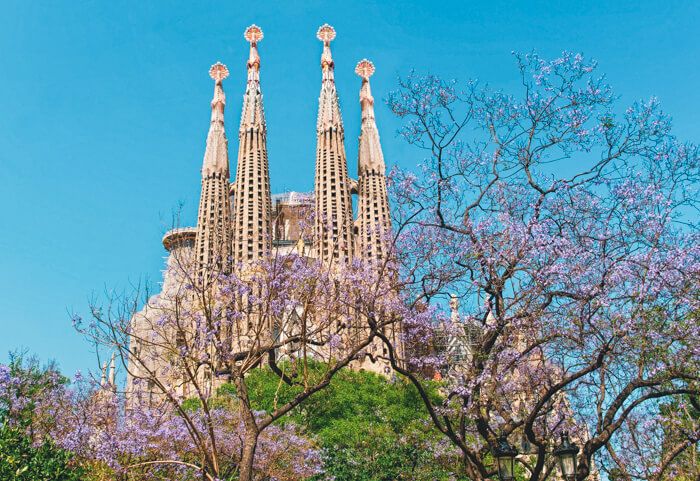
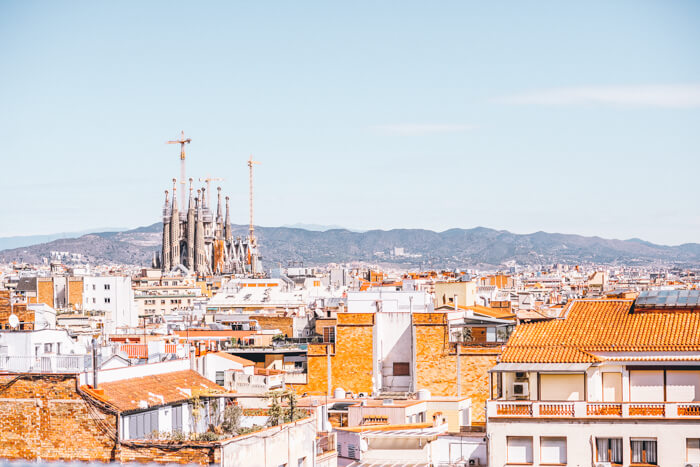
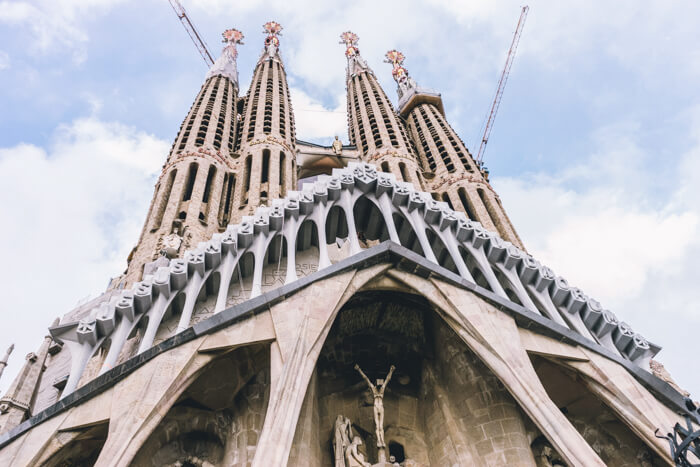
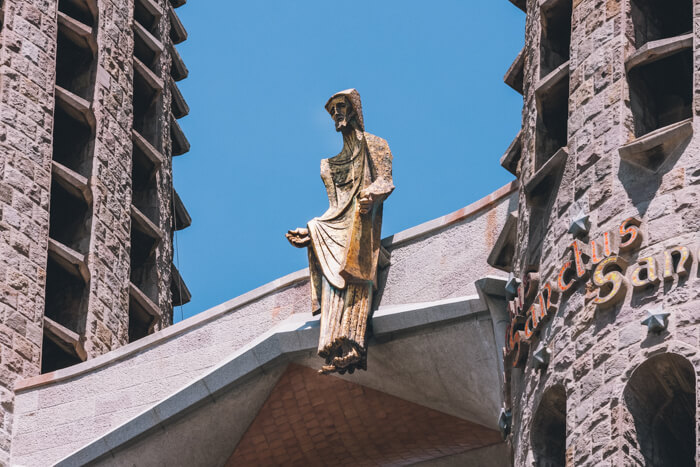
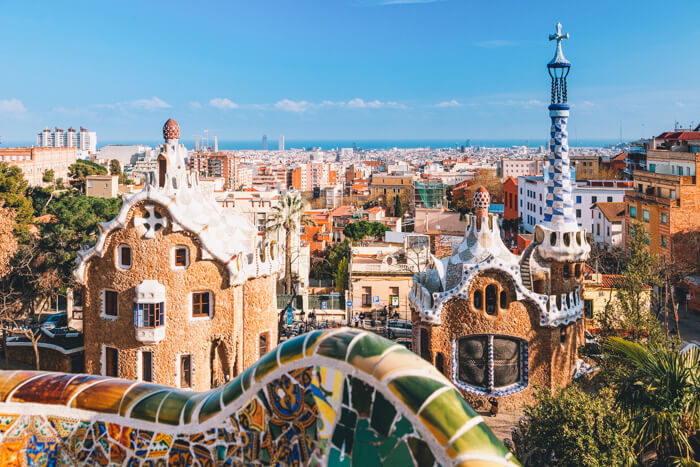
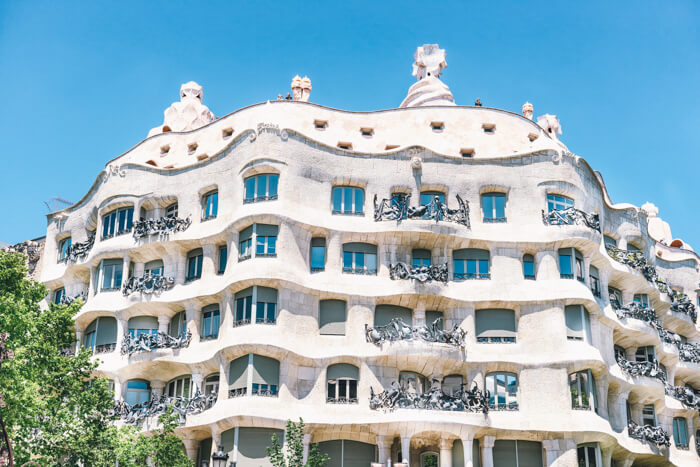
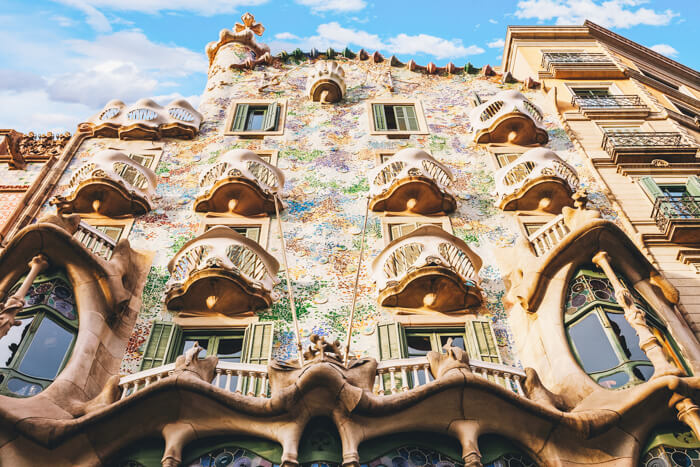
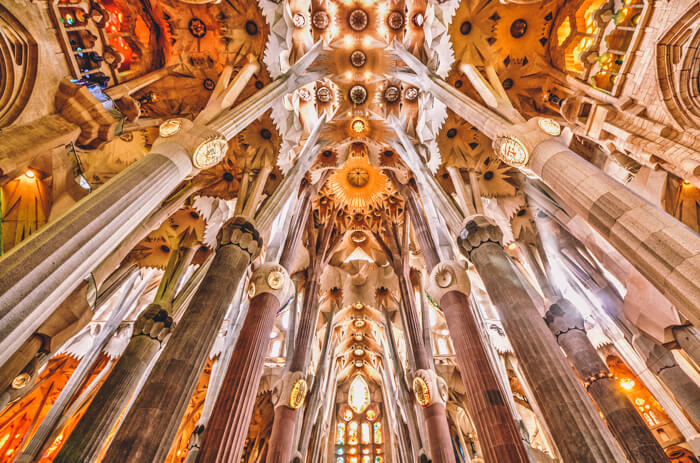
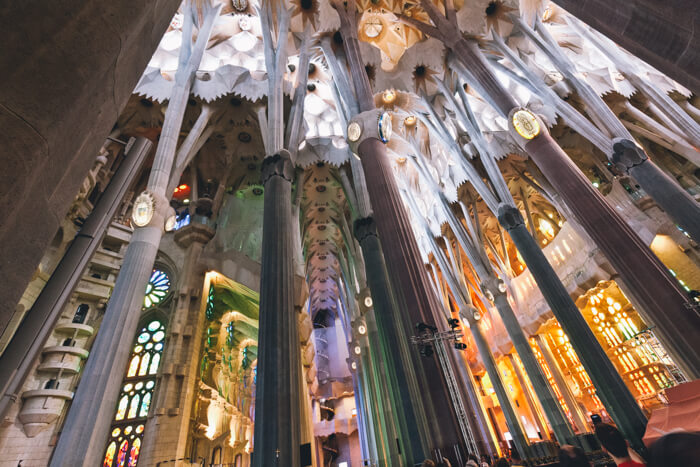
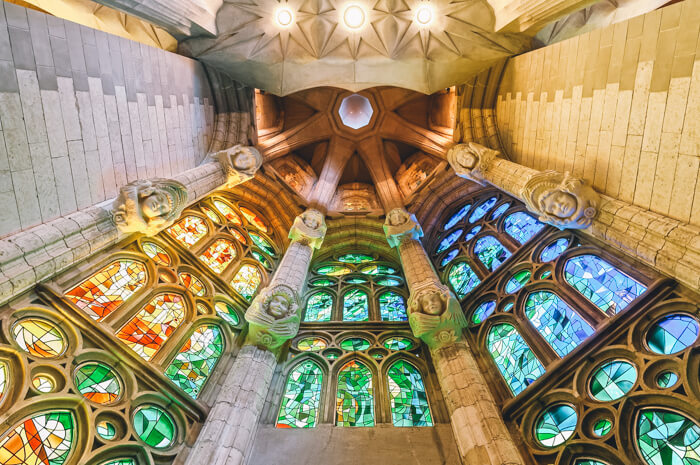
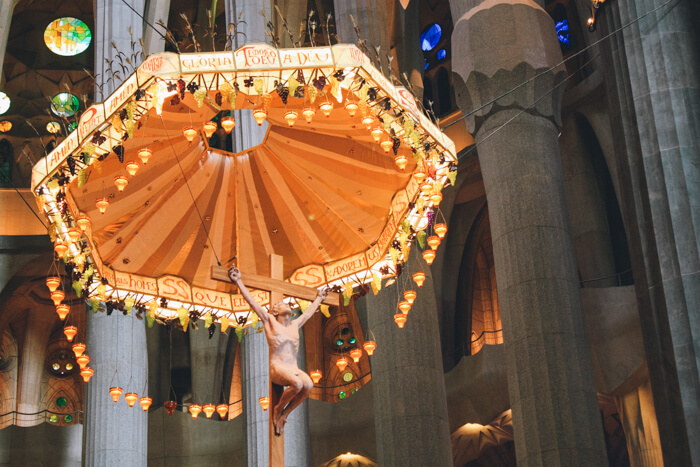
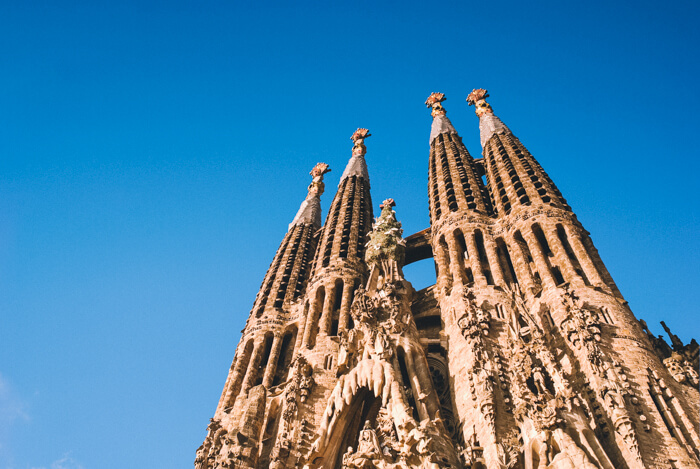
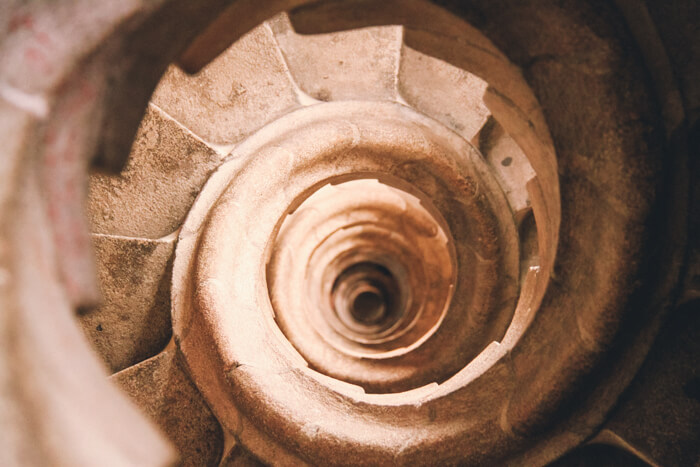
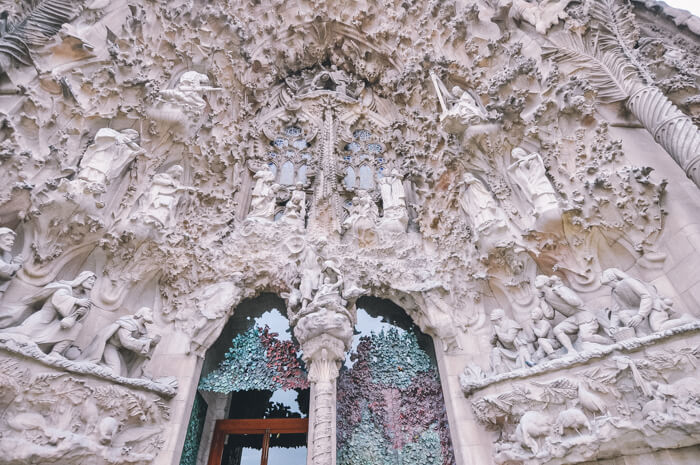
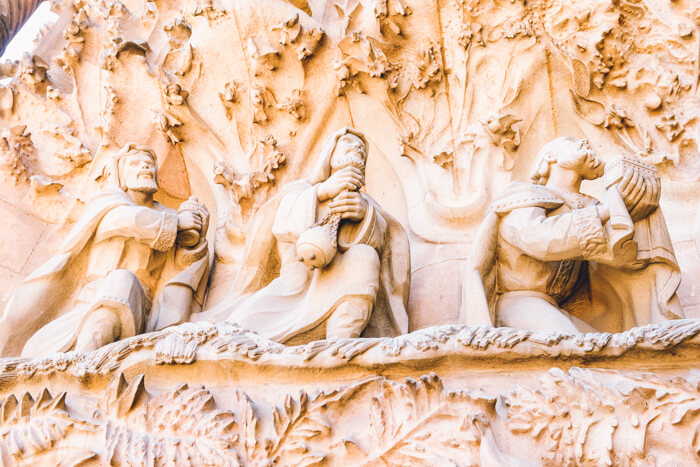
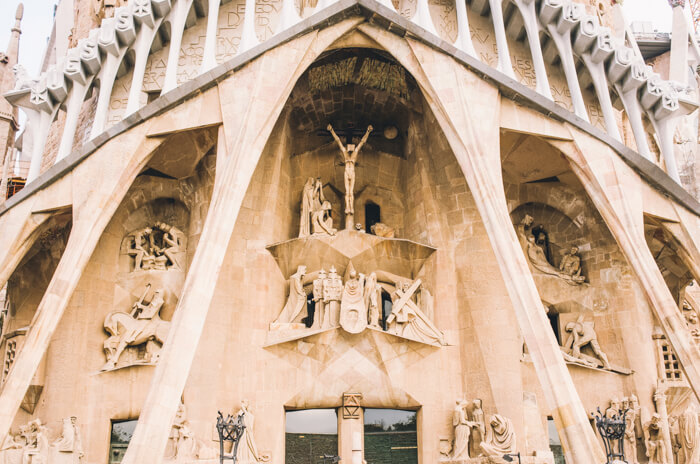
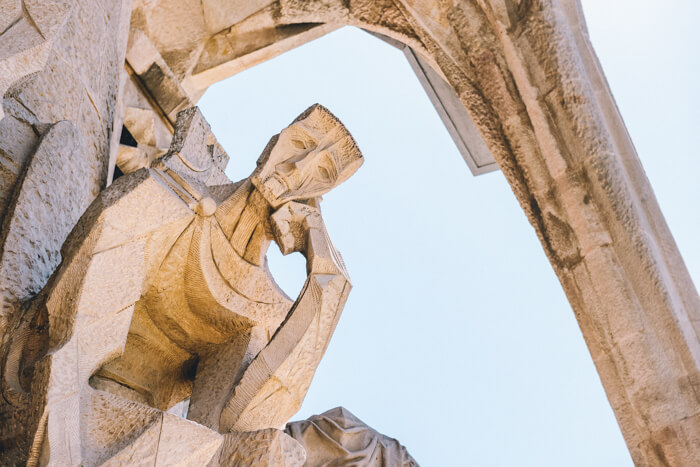
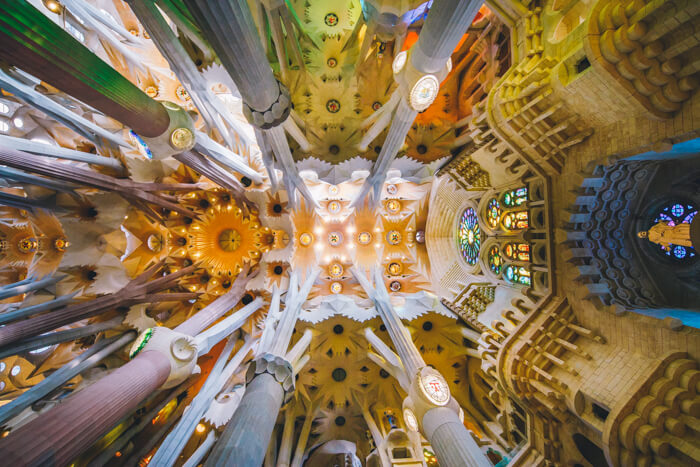
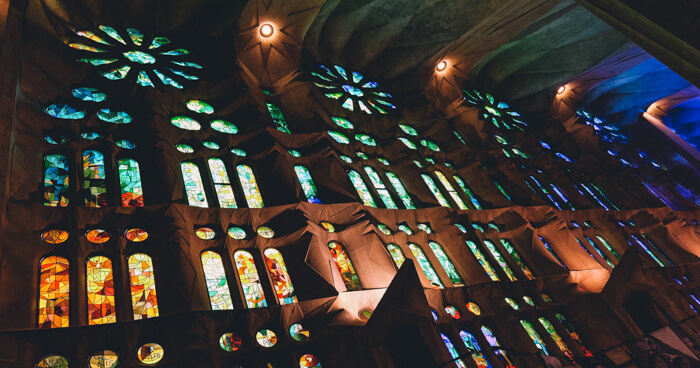
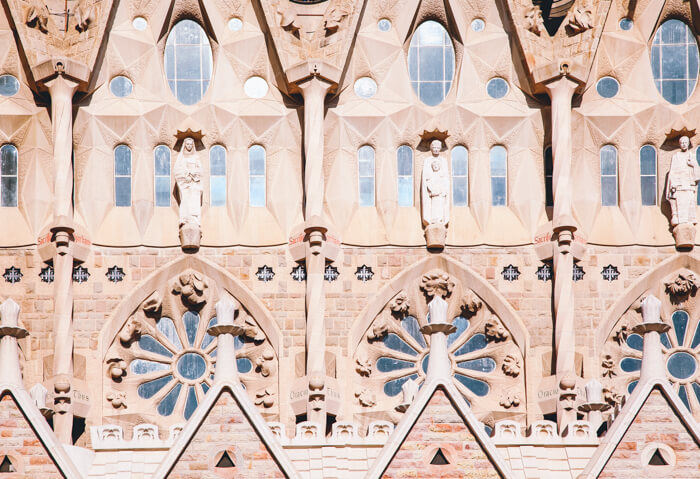
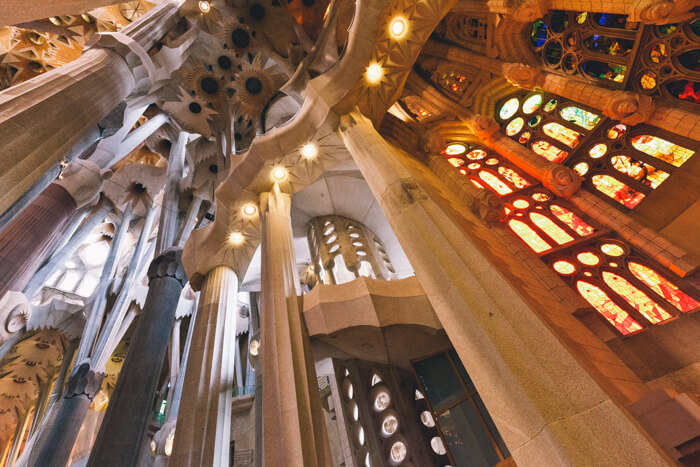
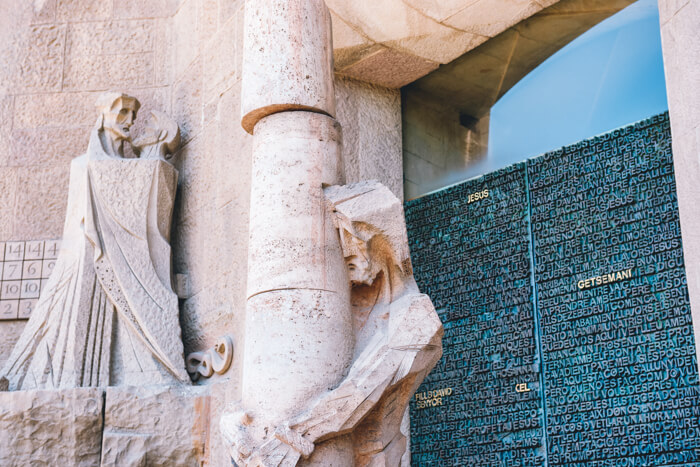
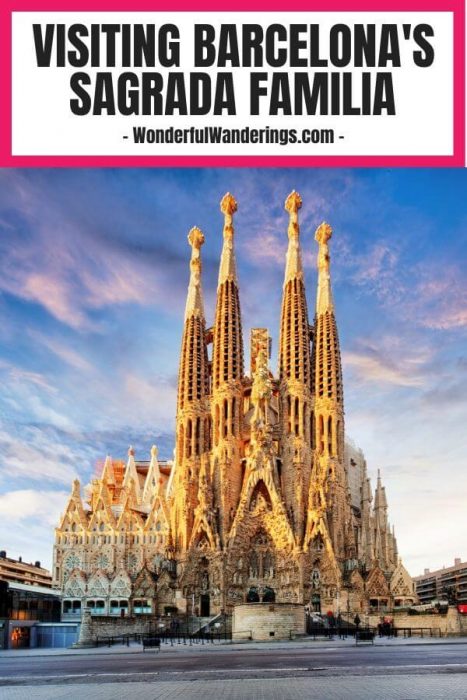
flor says
It´s worth waiting. I recommend to buy the tickets online because that line moves faster!
Sofie says
Indeed! Often there’s only a tiny or even no line for people who have their tickets already.
Kathryn Burrington says
I’ve wanted to see this for a long, long time and your photographs are a tantalising teaser. I’ll get there myself one day!
Sofie says
Thanks Kathryn!
I suggest you schedule it for the nearby future. Just to make sure you’ll make it happen:)
Jeff says
With those shots, i agree with you it worth the wait.
Sofie says
Thanks Jeff:)
Laura @Travelocafe says
Nice post. Love the photos. They are very slow in finishing this cathedral. Sometime we joke that by the time they finish, they will need to start restoration right away.
Nice pics.
We will leave for Barcelona in two days and probably will visit again La Sagrada Familia to see how far they have advanced with the construction in the last years.
Sofie says
So funny Laura I hadn’t read your comment yet, but made the exact same remark about restorations on Kian’s comment:)
Have fun in Barça!
Kian Griffin says
I so regret not going inside when I was in Barcelona, it’s pretty amazing from the outside alone…but inside looks spectacular! Wonder will it ever be finished? :)
Sofie says
Good question. I think it’ll always be a work in progress. By the time it’s finished they’ll already will have to have done plenty of renovating. Plus all the money that has to keep going into it…
I didn’t go in the first time I was in Barcelona, now over 8 years ago, but I’m glad that I did now.
Gran Canaria Local says
Glad to hear it was worth the wait, Sophie. We’re not particularly religious, but some of our favourite architecture on Gran Canaria’s the island’s churches. The church at Arucas, for example, is positively Gaudiesque.
Sofie says
I’m not particularly religious either, but I don’t think that means I can’t appreciate the architectural ideas behind a building.
I have to say I haven’t been to Gran Canaria yet, but I’ll make a note of that:)
Up&Away says
We visited last summer. I hadn’t purchased tickets before we left because I wasn’t sure what day we would go. The morning we were to visit, though, I had the hotel concierge purchase the tickets and even reserve our time for the elevator ride to the top. She printed them out for us and we were on our way, saving time and exhaustion for us and our two kids! So glad we visited this beautiful, iconic symbol of Barcelona.
Sofie says
Good thinking on asking the concierge!
We didn’t know what day we would be going either. In the end we didn’t mind the wait, but I imagine it would’ve been totally different with two kids :-)
Tim | UrbanDuniya says
I think Sagrada Familia is one of the most underrated attractions in Europe – it’s absolutely worth the wait, and I loved visiting!!
Sofie says
Do you think it’s underrated? I think it’s well visited, given the lines to get in:)
Tim | UrbanDuniya says
Hmmm maybe ‘underrated’ is the wrong word. I guess I mean that, considering how stunning it is, it doesn’t seem to be the icon to Barcelona that, say, the Eiffel Tower is to Paris. Perhaps it’s because so much of the beauty of La Sagrada Familia is on the inside!
Sofie says
I see what you mean. Perhaps it’s also because it isn’t finished yet:D
James says
The line and the cost deterred me from even considering going into Sagrada. Next time I’m in Barcelona, I think it’ll be online tickets for me. At least I can skip the line.
I hope you’re hitting up Park Guell, that is 100% worth the cost.
Sofie says
We were actually there just before you had to pay to get into Park Guell. It was my second visit of the park and I still loved it:)
James says
Park Guell is pretty awesome. Even the paid part was still worth going into. I love the top area with the cross though, fantastic views.
Sofie says
I really like that part as well, especially because it was less crowded when we were there and you can feel more like you’re really exploring the place:)
Agness says
On my bucket list! I could wait for hours to get inside, seriously, absolutely worth it. I also expected the tickets to be more expensive, but less than 15 euro will do!
Sofie says
Yeah Barcelona ‘attractions’ are pretty expensive in general, so less than €15 for La Sagrada is pretty okay:-)
Escape Hunter says
The Sagrada Familia took more than 2 hours waiting time to enter. It was a long long waiting line, but worth the effort indeed :)
Sofie says
Darn, over two hours is really long!